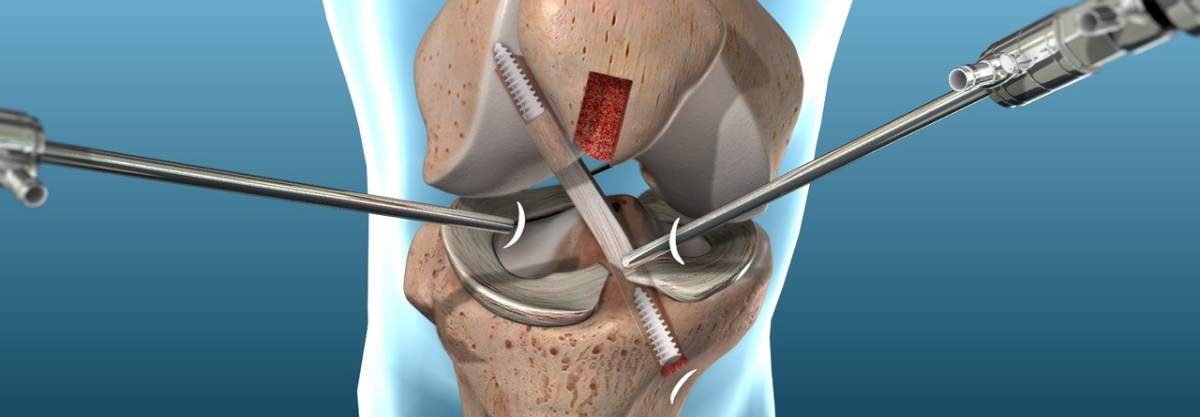
31 Mar, 2025 How ACL Reconstruction Works? Who Should Opt for ACL Repair
Anterior Cruciate Ligament (ACL) injuries are among the most common knee injuries, particularly among athletes and individuals involved in high-impact activities. Whether due to sports, accidents, or sudden twists, an ACL tear can significantly affect mobility and stability. Many patients face a crucial decision: ACL repair or ACL reconstruction? Understanding these procedures, the recovery process, and necessary precautions is essential for optimal healing.
How ACL Reconstruction Works?
ACL reconstruction is a surgical procedure used for restoring knee stability by replacing the torn ligament with a graft. The graft is usually taken from the patient’s hamstring, quadriceps, or patellar tendon, or sometimes from a donor.
The Procedure
- Pre-Surgical Preparations: Before surgery, patients may undergo physiotherapy to reduce swelling and regain mobility.
- Anesthesia and Incision: The surgery is typically performed under general anesthesia. Small incisions are made for the insertion of surgical instruments.
- Graft Placement: The surgeon removes the damaged ligament and replaces it with the chosen graft. Screws or other fixation devices secure the new ligament in place.
- Closure and Recovery: After securing the graft, the incisions are stitched, and the knee is bandaged. The patient is then monitored postoperatively.
Recovery depends on several factors, including adherence to rehabilitation programs. How long does ACL reconstruction take to heal? On average, patients take about 6–9 months to fully recover, but returning to sports or your activities may take up to a year.
Who Should Opt for ACL Repair?
While ACL reconstruction is the standard procedure for complete ACL tears, some individuals might be candidates for ACL repair. ACL repair involves stitching the torn ligament back together instead of replacing it.
Ideal Candidates for ACL Repair:
- Patients with a partial tear, where the ligament remains attached to the bone.
- Individuals experiencing instability but without complete ligament detachment.
- Young individuals with strong healing potential.
- Those looking for non-surgical treatment options for ACL tear recovery and have minimal functional impairment.
However, ACL repair is not suitable for everyone. Athletes or individuals with complete ligament rupture often require reconstruction for long-term knee stability.
Recovery after ACL repair or reconstruction requires patience and strict adherence to post-surgical guidelines. Here are some important precautions to ensure proper healing:
1. Follow Structured Physiotherapy Plan Given By AOSM.
Engaging in physical therapy exercises after ACL tear surgery is crucial. Physiotherapy helps strengthen the muscles around the knee, improve range of motion, and restore balance.
2. Use Proper Support and Bracing
Wearing the best knee braces for ACL tear recovery helps stabilize the knee and prevents sudden movements that could disrupt healing.
3. Avoid High-Impact Activities
One of the common mistakes to avoid after ACL reconstruction surgery is returning to sports or intense activities too soon. This can lead to re-injury and delayed recovery.
4. Maintain a Healthy Diet and Hydration
Proper nutrition plays a significant role in tissue healing. A diet rich in proteins, vitamins, and minerals supports faster recovery.
5. Monitor Pain and Swelling
It is normal to experience some pain and swelling after surgery. Using ice packs, elevating the leg, and prescribed medications help manage discomfort.
Cost of ACL Reconstruction Surgery in India
The of ACL reconstruction surgery in India varies based on hospital facilities, surgeon expertise, and location. On average, the procedure costs between INR 1.5 lakh to INR 3.5 lakh. Factors such as post-surgical physiotherapy and medications may add to the overall expense.
Can You Fully Recover from an ACL Tear Without Surgery?
While minor ACL injuries might heal with conservative treatment, a complete tear typically requires surgical intervention for full recovery. Patients opting for non-surgical treatment options for ACL tear recovery should focus on strengthening exercises, bracing, and lifestyle modifications. However, for individuals with high activity levels, surgery remains the best solution for long-term knee stability.
Final Thoughts
ACL injuries can be challenging, but with the right approach, patients can regain full mobility. Whether opting for ACL repair or reconstruction, understanding the process, post-operative care, and rehabilitation is crucial. Avoiding common mistakes after ACL reconstruction surgery and following a strict recovery plan ensures a successful outcome. Always consult an experienced orthopedic specialist to determine the best treatment options for ACL tear recovery based on individual needs.
